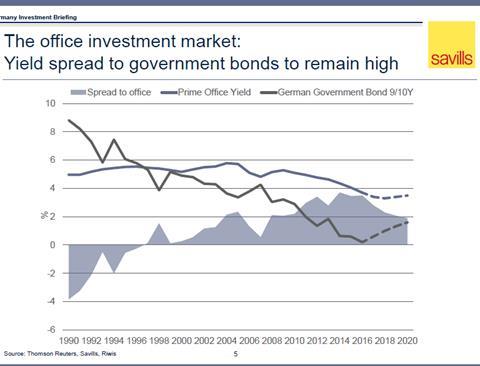Investors should not just focus on core markets or only look at Germany’s top seven cities because secondary markets can offer great opportunities and better yields, panellists said at the PropertyEU Germany Investment Briefing, which was held in London on Friday.

‘There is a big sector that offers many opportunities beyond the top seven markets,’ said Alexander Fischbaum, managing director of AF Advisory. ‘In the non-prime assets segment there is a lot of attractive business to be had. Shiny assets are all very well, but secondary assets, if well managed, provide good returns.’
Germany provides such a varied field, underpinned by a strong economy and stable political environment, that investors should look at the wide range of deals to be had. ‘Why only look at the top five or seven cities when there are good cities spread across the country, with established companies and job drivers?’ asked Nikolai Deus-von Homeyer, managing partner, NAS Invest. ‘It is worth looking into secondary markets.’
Markus Beran, head of origination international investors, Berlin Hyp, struck a note of caution: ‘Remember that higher yields mean higher risk,’ he said. ‘It is important to choose wisely, because situations vary and not all German cities are doing well.’
In order to choose well, investors must have boots on the ground or partners with local knowledge who are able to source the less obvious deals, experts agreed.
‘Secondary assets need extensive asset management, good people on the ground and investors with the right mindset, prepared to accept the volatility,’ said Fischbaum. ‘But one shouldn’t forget the attractions of these markets. Higher yields mean you can create additional value to insure you against rate rises and market changes.’
Too many people are chasing big deals in the big cities, said Deus-von Homeyer, ‘but have an income-producing strategy and we find the best yields in smaller deals. We are looking at 6% to 8% yields, for assets that are below the range of institutional investors.’
NAS Invest’s strategy is buying the assets, working on them with capex or new leases, repositioning them and repackaging them and then creating portfolios which become attractive to institutions, he said. ‘Risk is limited if you take into account the risk premium you are getting. Risk is mitigated by your vision, your ability to execute and the talented people you have working for you.’
Core assets are very highly priced in Germany now, but they will always find buyers because there are investors who have a limited appetite for risk and who do not want to have to manage the assets. But buying core is becoming more of a risky strategy at this point in time, according to Deus-von Homeyer: ‘Yields are at record low and they may not stay where they are. That is why value-add strategies are particularly attractive now.’










